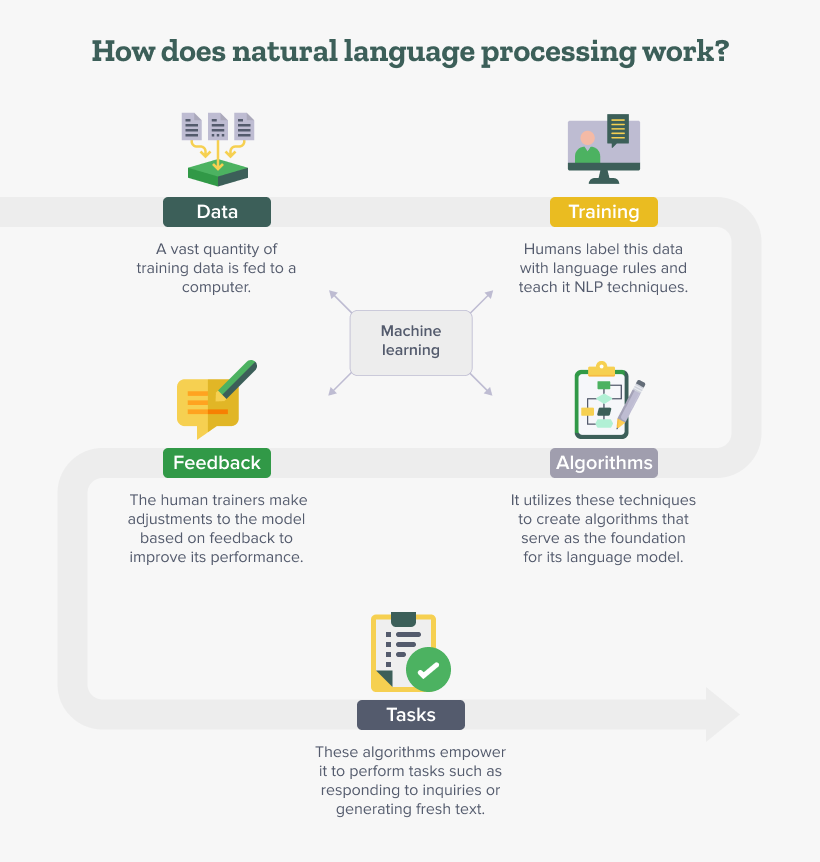Still have questions? Leave a comment

Checklist: Dissertation Proposal
Enter your email id to get the downloadable right in your inbox!

Examples: Edited Papers
Enter your email id to get the downloadable right in your inbox!
Need
Editing and
Proofreading Services?

What Are Large Language Models and How They Work: Explained!
 Mar 22, 2024
Mar 22, 2024 5
min read
5
min read
- Tags: Artificial Intelligence
Large language models (LLMs) are revolutionizing the way we interact with artificial intelligence, particularly in the realm of writing and authorship. These advanced AI systems are not just changing the landscape for writers and authors but are also reshaping our understanding of language processing and generation.
With this article, we aim to illuminate the exciting world of LLMs for writers, authors, and anyone intrigued by the intersection of technology and language. Furthermore, let’s dive deep into what large language models are, how they work, and explore some of the best examples out there.
First, let’s understand the large language models’ definition:
What are large language models?
A large language model (LLM) is an advanced AI algorithm trained to understand, interpret, and generate human language. These models process vast amounts of text data to learn language patterns, nuances, and the complex structure of human communication.
Large language models are the engines behind many of the sophisticated AI writer tools, authors use today, from text prediction and content generation to more complex tasks like translation and summarization.

Now that we’ve seen what are large language models, let’s try to understand how large language models work!
What are large language models used for?
Large language models are utilized across various sectors for their ability to understand and generate human-like text, significantly benefiting editing companies, proofreading companies, and formatting services. These models assist in refining content with high accuracy, offering valuable tools for enhancing the clarity, coherence, and overall quality of texts.
Additionally, AI resume builders leverage these models to craft personalized and professional resumes, while AI essay writers provide students and professionals alike with the ability to generate essays on a wide range of topics, ensuring both creativity and adherence to academic source standards. This versatility makes large language models indispensable in today’s digital landscape.
Working of large language models explained
How large language models work can seem like magic at first glance, but it’s all rooted in sophisticated technology and machine learning principles.
These models are built on an architecture known as Transformers, which is designed to understand the context across long stretches of text. This means they can consider information from earlier in the text while working on a later part, allowing for the generation of content that’s both coherent and contextually relevant.
Training these AI large language models involves feeding them vast amounts of text, during which they learn to anticipate what word comes next based on the preceding context. As they process more data, they gradually get better at grasping the nuances of language, crafting text, and even tackling specific tasks like answering questions or summarizing information. This learning process enables them to mimic a deep understanding of language, making them incredibly versatile tools for a variety of applications.

Exploring large language model examples will make you more familiar with the concept. In the next section, we will list down the 10 best large language models for you!
List of large language models
This list is a mix of paid and free large language models.
1. GPT-4 (OpenAI)
As a frontrunner in the LLM space, GPT-4 is known for its versatility in generating human-like text, making it a favorite among writers and content creators. Its capacity for understanding context and generating relevant, coherent text on a wide range of topics is particularly beneficial for authors seeking inspiration or assistance in fleshing out their ideas. Using ChatGPT prompts for resumes, books, assignments, etc. makes the tasks like resume writing or novel writing very easy and quick.
2. BERT (Google)
BERT (Bidirectional Encoder Representations from Transformers) revolutionized the way machines understand human language. It focuses on the context of words within a sentence, rather than just the words themselves. Also, this model has significantly improved the performance of Google’s search engine, making it possible to get more accurate search results based on natural language queries. BERT can be used to enhance the performance of AI chatbots.
3. T5 (Google)
The Text-to-Text Transfer Transformer takes a unique approach. It converts all NLP tasks into a text-to-text format, enhancing its applicability across various tasks. For writers, T5 can be a powerful tool for creating summaries of their work or translating content into other languages, broadening their audience reach. Authors can also use this tool to create book summaries.
4. ELECTRA (Google)
This model is efficient in learning more from less data, making it a cost-effective option for many language processing tasks. Consequently, this makes ELECTRA particularly useful for authors working with niche topics where training data might be limited.
5. RoBERTa (Facebook)
An optimized version of BERT, RoBERTa excels in tasks requiring deep contextual understanding, from sentiment analysis to content classification.
6. XLNet (Google/CMU)
Outperforming BERT in many benchmarks, XLNet’s permutation-based training method offers a more comprehensive understanding of language context. For writers, this means more sophisticated content generation capabilities, especially in applications requiring a deep understanding of complex subject matter.
7. BART (Facebook)
BART (Bidirectional and Auto-Regressive Transformers) is a natural language processing (NLP) model developed by Facebook. By combining the strengths of both BERT and GPT, BART excels in text generation and comprehension tasks. It is ideal for summarization and translation.
8. ERNIE (Baidu)
ERNIE (Enhanced Representation through kNowledge Integration) stands out by integrating world knowledge into its training, providing nuanced language understanding. It is a valuable asset for authors needing to incorporate specific factual content accurately in their work.
9. ALBERT (Google)
A lighter version of BERT, ALBERT offers comparable performance with significantly fewer parameters, making it efficient and scalable. Writers interested in deploying language models on less powerful hardware may find ALBERT an appealing option.
10. Megatron (NVIDIA)
Known for its sheer size, Megatron is designed for demanding computational tasks, pushing the boundaries of what LLMs can achieve. For research and development teams in writing and publishing companies, Megatron offers cutting-edge capabilities for analyzing and generating text.
These examples of large language models showcase the diversity and capability of LLMs in improving writing, research, and content creation. Each model has its unique strengths, making them suitable for various tasks, from generating creative writing content to understanding complex queries.
The world of large language models is vast and constantly evolving. It offers writers, authors, and content creators powerful tools to enhance their work. Whether you’re looking for inspiration, assistance in any type of editing, proofreading, translation, or help with plagiarism checking there’s likely an LLM that can meet your needs.
The journey into AI and language models is an ongoing one, with discoveries and advancements around every corner. For writers and authors, embracing these large language models means unlocking new realms of creativity and efficiency in your craft.
As experts in editing and proofreading services, PaperTrue is now leveraging the power of large language models and AI to provide AI-based editing services.
Keep on reading for more useful resources:






